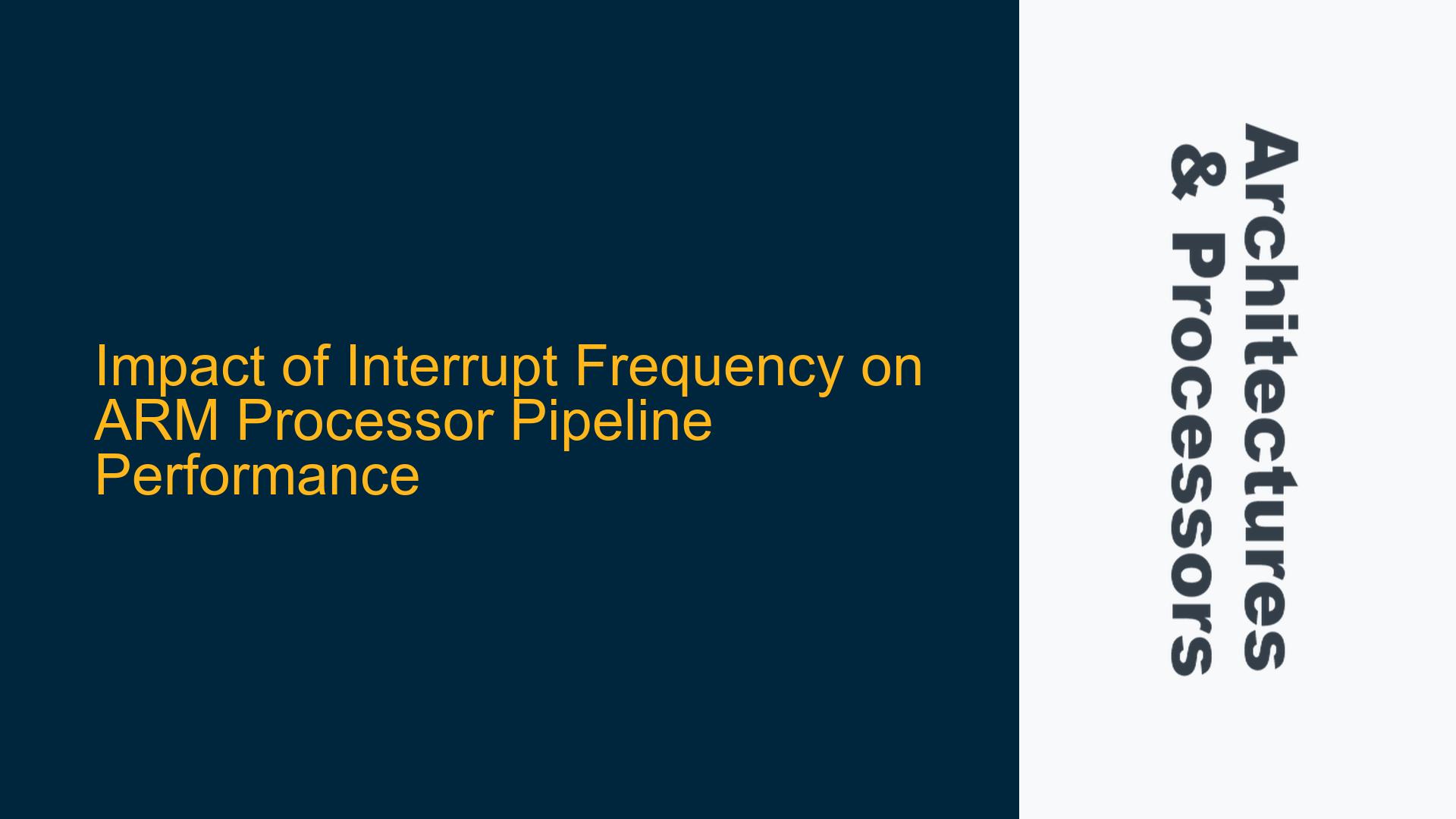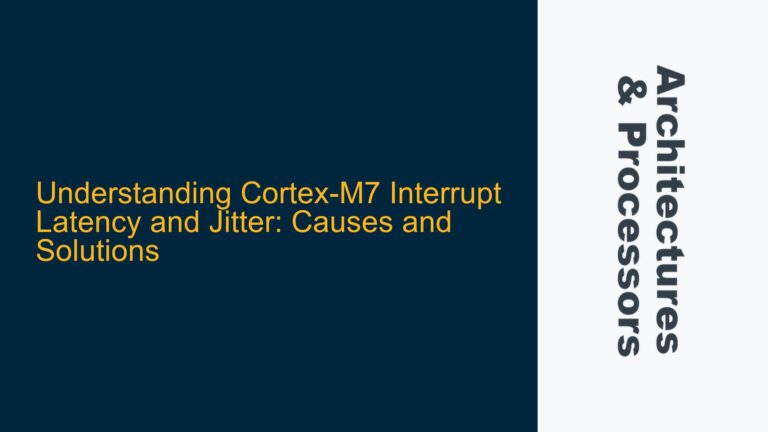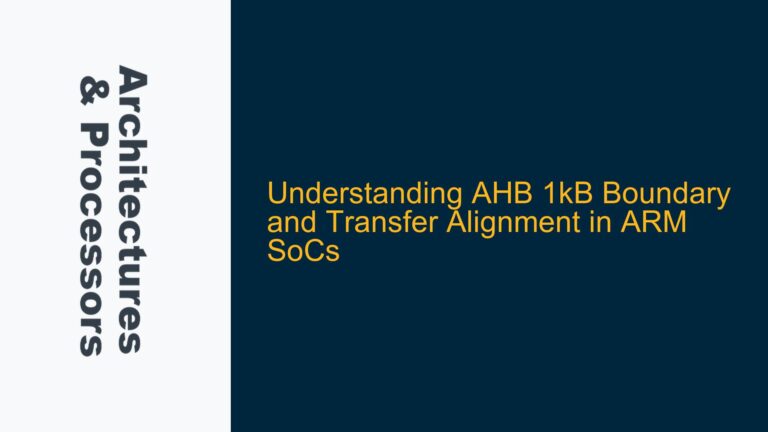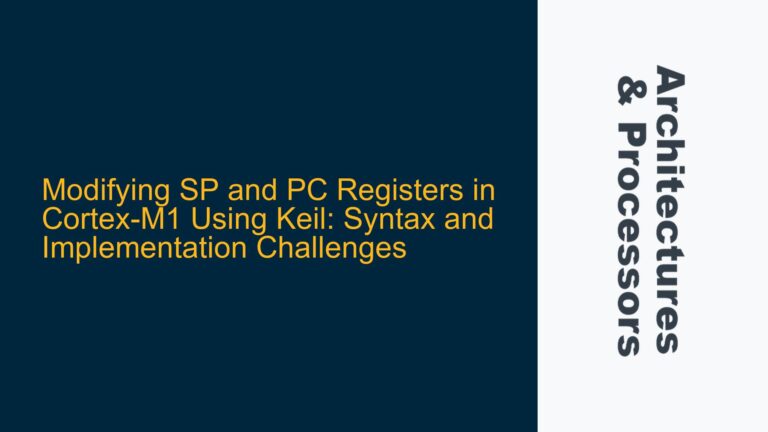ARM Cortex-M4 Pipeline Efficiency Degradation Due to Frequent Interrupts
The ARM Cortex-M4 processor, like many modern embedded processors, employs a pipelined architecture to enhance instruction throughput and overall performance. The pipeline is divided into several stages, each handling a specific part of the instruction execution process, such as fetch, decode, execute, memory access, and write-back. The efficiency of this pipeline is crucial for achieving high performance, particularly in real-time systems where deterministic behavior is required.
When an interrupt occurs, the processor must temporarily halt the normal execution flow, save the current state, and jump to the Interrupt Service Routine (ISR). This process inherently involves flushing the pipeline, as the instructions that were in various stages of execution may no longer be relevant once the ISR begins. After the ISR completes, the processor must restore the saved state and refill the pipeline with the instructions that were interrupted. This flushing and refilling of the pipeline introduce latency and reduce the overall efficiency of the processor.
The relationship between interrupt frequency and pipeline performance is not strictly linear, but it is significant. Each interrupt introduces a fixed overhead associated with the context switch, which includes saving and restoring the processor state, flushing the pipeline, and refilling it. As the frequency of interrupts increases, the cumulative overhead grows, leading to a noticeable degradation in pipeline efficiency. This degradation is particularly pronounced in systems with high interrupt rates, where the processor may spend a substantial portion of its time handling interrupts rather than executing useful work.
The impact of interrupts on pipeline performance can be quantified by considering the number of clock cycles lost per interrupt. For example, if an interrupt requires 20 clock cycles to handle (including the context switch and pipeline refill), and the processor experiences 100 interrupts per second, the total overhead would be 2000 clock cycles per second. In a system with a clock frequency of 100 MHz, this overhead represents a 2% loss in available processing power. However, as the interrupt frequency increases, this overhead grows proportionally, leading to a more significant impact on performance.
Context Switch Overhead and Pipeline Flush Latency
The primary cause of pipeline performance degradation in the presence of frequent interrupts is the overhead associated with context switching and pipeline flushing. When an interrupt occurs, the processor must perform several tasks before it can begin executing the ISR. These tasks include saving the current program counter, status registers, and other critical state information to the stack. This process, known as the context switch, requires a certain number of clock cycles, during which the pipeline is effectively stalled.
Once the context switch is complete, the processor must flush the pipeline to discard any partially executed instructions that are no longer relevant. Flushing the pipeline involves clearing all stages of the pipeline and ensuring that no stale instructions remain. This step is necessary to prevent incorrect execution when the ISR begins. After the pipeline is flushed, the processor fetches the first instruction of the ISR and begins executing it. The time required to flush and refill the pipeline adds to the overall latency of the interrupt handling process.
The latency introduced by context switching and pipeline flushing is influenced by several factors, including the depth of the pipeline, the complexity of the processor’s state, and the efficiency of the interrupt handling mechanism. In the ARM Cortex-M4, the pipeline is relatively shallow compared to high-performance processors, which helps to minimize the latency. However, even with a shallow pipeline, the overhead of context switching and pipeline flushing can be significant, especially in systems with high interrupt rates.
Another factor that contributes to the overhead is the need to restore the processor state after the ISR completes. Once the ISR finishes executing, the processor must restore the saved state from the stack and refill the pipeline with the instructions that were interrupted. This process introduces additional latency, further reducing the overall efficiency of the pipeline.
Optimizing Interrupt Handling to Minimize Pipeline Performance Impact
To mitigate the impact of frequent interrupts on pipeline performance, several strategies can be employed. These strategies aim to reduce the overhead associated with context switching and pipeline flushing, thereby improving the overall efficiency of the processor.
One approach is to optimize the ISR to minimize its execution time. By reducing the number of instructions executed in the ISR, the amount of time the processor spends in the interrupt context is reduced, which in turn reduces the overall overhead. This can be achieved by offloading non-critical tasks from the ISR to the main program loop or by using more efficient algorithms within the ISR.
Another strategy is to use nested interrupts, where higher-priority interrupts can preempt lower-priority ones. This allows the processor to handle the most critical interrupts first, reducing the likelihood of missing high-priority events. However, nested interrupts introduce additional complexity, as the processor must manage multiple levels of context switching and pipeline flushing. Careful design and testing are required to ensure that nested interrupts do not introduce new issues, such as race conditions or deadlocks.
In some cases, it may be possible to reduce the frequency of interrupts by using hardware features such as Direct Memory Access (DMA) or hardware timers. DMA can be used to offload data transfer tasks from the processor, reducing the number of interrupts generated by peripheral devices. Similarly, hardware timers can be used to generate periodic events without requiring the processor to handle each event individually. By reducing the number of interrupts, the overall impact on pipeline performance is minimized.
Finally, it is important to carefully configure the interrupt controller to ensure that interrupts are handled as efficiently as possible. This includes setting appropriate priority levels for each interrupt, enabling interrupt nesting where appropriate, and ensuring that the interrupt controller is configured to minimize latency. In the ARM Cortex-M4, the Nested Vectored Interrupt Controller (NVIC) provides a flexible and efficient mechanism for managing interrupts, and careful configuration of the NVIC can help to reduce the overhead associated with interrupt handling.
In conclusion, the impact of frequent interrupts on ARM Cortex-M4 pipeline performance is significant, but it can be mitigated through careful design and optimization. By reducing the overhead associated with context switching and pipeline flushing, and by optimizing the ISR and interrupt handling mechanism, it is possible to maintain high pipeline efficiency even in systems with high interrupt rates.






